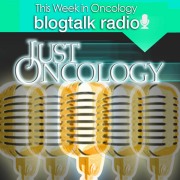 As I was browsing through the Harvard Business Review the other day (seriously, this is not my usual reading material), I happened on an interesting article. Actually, the piece was an interview in the “Idea Watch” section entitled: “Defend Your Research; The Color Pink Is Bad for Fighting Breast Cancer”, HBR, pp. 30-31, July-August, 2011. Professor Stefano Puntoni, an associate professor of marketing management at the Rotterdam School of Management, Erasmus University, was asked to explain the counter-intuitive findings of his research. He stated: “Our original prediction was boring. My research partners-Steven Sweldens of Insead and Nader Tavassoli of London Business School-and I thought pink and other gender cues would make campaigns against women’s diseases, such as breast and ovarian cancer, more effective. But we found the opposite”.
As I was browsing through the Harvard Business Review the other day (seriously, this is not my usual reading material), I happened on an interesting article. Actually, the piece was an interview in the “Idea Watch” section entitled: “Defend Your Research; The Color Pink Is Bad for Fighting Breast Cancer”, HBR, pp. 30-31, July-August, 2011. Professor Stefano Puntoni, an associate professor of marketing management at the Rotterdam School of Management, Erasmus University, was asked to explain the counter-intuitive findings of his research. He stated: “Our original prediction was boring. My research partners-Steven Sweldens of Insead and Nader Tavassoli of London Business School-and I thought pink and other gender cues would make campaigns against women’s diseases, such as breast and ovarian cancer, more effective. But we found the opposite”.
Perplexed, they delayed publishing their results and kept running tests. After 3 years, the same basic finding was validated 10 times. Initially, women who wrote an essay about gender were less likely to donate to ovarian cancer research than women writing gender-neutral essays (42% vs. 77%). Then, breast cancer banner ads were placed on a website but not mentioned to the women viewing them. When the site was feminine-oriented, 33% recalled the ads; when gender-neutral, 65% remembered. The color pink turns out to be one of many feminine gender-cues, but prior to the 20th century it was actually associated with the male gender.
Most importantly, “these findings seem to fly in the face of the marketing principle that you should build a strong brand that emotionally connects with consumers”. So why is this? Interestingly, ideas or concepts that are regarded as threatening or difficult to comprehend elicit defensive responses, mainly denial. The color pink tends to connect women with the thought that they could die of breast cancer. Another fascinating fact is that not all gender-cues result in defensive responses. Mascara ads were placed on control websites and 76% of the gender-primed group recalled these non-threatening ads, even more than the control group (65%). Additionally, gender-cues involving prostate cancer are not as threatening in men. The author postulates that prostate cancer is more a disease of older men and has a longer natural history, i.e., it is not associated with impending fatality.
Finally, since pink is synonymous with breast cancer, “is there any way to preserve it but overcome the negative effect”? Women found pink ads about breast cancer harder to read than more gender-neutral peach ads. But, men found pink ads slightly easier to read. One suggestion that results from this is “that seeing more men wearing pink as part of breast cancer awareness may start to break down the color’s effect as a gender cue”. Another thought is that pink may empower men to donate more. Obviously, work in this field is very preliminary.
As a result of the above article, I tried to think of research where the opposite of the anticipated result was found. Tamoxifen was approved for clinical use shortly after I started my practice in 1975. It was marketed as an anti-estrogenic alternative to surgical oophorectomy. Therefore, the concern was that it could lead to osteoporosis. To test this hypothesis, studies were initiated in 1980 and completed 10 years later. If anything, Tamoxifen resulted in slight reduction in the incidence of bone fractures. But: surprise, surprise!! Increases in endometrial cancer and deep venous thrombosis, occasionally leading to lethal pulmonary emboli, were found. These complications led to the realization that the drug had estrogenic properties and was in fact a partial, not total, Selective Estrogen Receptor Modulator (SERM).
Quoting Don Miguel Ruiz from The Four Agreements:
“The Third Agreement Is Don’t Make Assumptions. We have the tendency to make assumptions about everything. The problem with making assumptions is that we believe they are the truth. We could swear they are real.”
This is why we do research.







